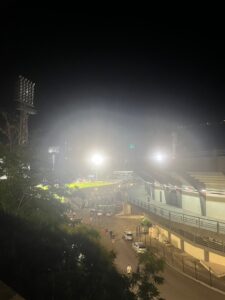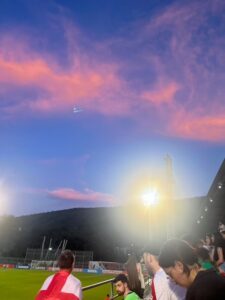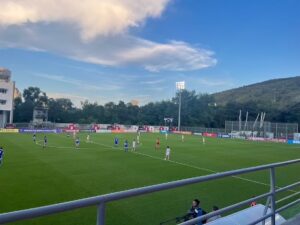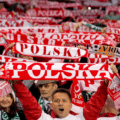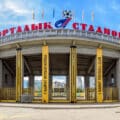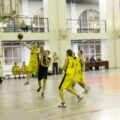The history of soccer in Georgia goes back to the late 1800s, when it was brought to country by English sailors shortly after the sport was invented. Although Georgia was an early adopter of the sport, its development has been arguably held back by colonialism. Georgia was largely a backwater for Soviet soccer and the best Georgian players often went to play for teams based in Russia.
Today, however, Georgia’s international soccer profile is rising, particularly with the arrival of Khvicha Kvaratskhelia, a Georgian national who is now a rising star for Napoli in Italy and who additionally plays on the Georgian National Team. Georgian soccer is also gaining more partnerships and sponsorships from Europe that promise to help develop the game further in Georgia.
As many SRAS students in Georgia have enjoyed attending games there and seeing the sport develop before their eyes, Popkult has compiled, with the help of a number of student writers and Online Research Interns, the following introductory guide to Georgian soccer.
Early History of Georgian Soccer
By Jacqueline Row
Soccer was directly imported to Georgia from its English homeland. The Georgians had a long history of interactions with the English through commerce and trade, particularly in the port city of Poti, which is considered to be the “cradle of soccer” for Georgian fans.
Local soccer teams were first mentioned in Georgian newspapers by the 1890s, although it is believed – and highly probable – that the sport was introduced much earlier, for instance, when English sailors and workers arrived with Poti’s now famous lighthouse. It was prefabricated in England and assembled in Poti over the course of about a year from 1864-1865, just after the sport was invented in 1863 and when it was first sweeping the English working class as a highly popular sport.
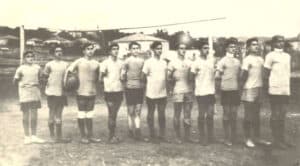
The first officially founded team appeared in 1906 with FC Shevardeni Tbilisi, as recorded by the the Public Affairs Council of Tbilisi Governorate as part of the local Sokol Sports Society (first formed by Czech public figure Jaroslav Svatoš at the end of the 1800’s). The name of the team and sports society both translate as “Eagle,” from Georgian and Czech respectively.
FC Comet Tbilisi was officially founded in 1907 and the first matches are recorded in government records as of 1911. Although recognized as the birthplace of Georgian soccer, Poti’s first official team FC Kolkheti Poti was founded only in 1913, as the sport continued to garner official favor. At around the same time, soccer became a school sport with teams founded at educational institutions throughout Georgia, often with some official fanfare. Soccer’s popularity is recorded as spreading to important cities of Sukhumi, Kutaisi, and Batumi at this time.
Most sources likened Georgian soccer players in the 1920s to South American players, which were also excelling at the sport by that time. Players from both regions were said to value improvised attacks over coordinated effort and dribbling rather than physical defense. Sources often referred to a national Georgian style of planning by likening movements to the fast, precise movements of the Georgian national dance, which was at that time beginning to be recorded and supported by Georgian institutions.
In part, this was also part of racial stereotyping popular in Europe at that time, of grouping “southern peoples” from warmer countries as having “hotter blood” and therefore being more emotional and less logical. Although a racist stereotype, it was supported by some as a way to turn what was often cited as a deficiency in “southern peoples” into a strategic asset.
During Georgia’s brief independence following the Russian revolution (1918-1921), soccer exploded, with more than 100 teams eventually operating at this time. After the Soviets then conquered the independent nation in 1921, soccer remained a largely popular and unregulated institution as the new government struggled to gain a foothold on power. Thus, in 1924 there were still over 120 teams playing across Georgia, with only a fraction of them officially registered with sports societies and most playing each other informally, often without even a coach, in amateur and informal competitions.
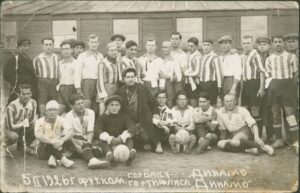
The first Trans-Caucasian Championship was held in 1926. This championship, part of both the nationalities and social development policies of the USSR, pitted the Georgian, Armenian, and Azerbaijani national teams against each other for a total of three matches to determine first, second, and third place between the three national teams within the Transcaucasian Socialist Federative Soviet Republic.
The Georgian SSR League was launched in 1927 for teams based in Georgia. This League would survive the dissolution of the Transcaucsian Socialist Federative Soviet Republic and be overseen by the Georgian SSR’s Soccer Federation – a regional federation formed under the state-wide Soviet Soccer Federation.
The Trans-Caucasian Championship was held four additional times through 1935, usually in the Federation’s capital of Tbilisi, Georgia (except in 1934, when it was held in Baku, Azerbaijan). The Georgian National Team dominated the tournaments, winning the final three tournaments in 1928, 1934, and 1935.
By 1935, as soccer became more regulated, there were only 10 soccer teams officially registered within Georgia. Most were still associated with a sports society, just as they had been before the revolution. However, under the Soviets, these societies were placed under major industries which then provided funding and organization for them. Major examples in Georgia were Dinamo, associated with the local Soviet government, Lokomotiv, associated with the railways industry, and Meshakte, which was connected with mining.
Lavrentiy Beria, the infamous former head of the Soviet secret service, who was also ethnically Georgian, is said to have had a major impact on the development of Soviet soccer in Georgia during his reign. He took an especial interest in Dinamo Tbilisi, the team associated with the main office of the Soviet secret service in Georgia. This special attention helped establish Dinamo Tbilisi as a lasting force in Georgian soccer.
Throughout this time, Georgian soccer continued to be known for its distinctive style. Its players were known for agility and improvisation on the field and this reputation has largely held true into the modern era.
The Georgian Soccer Federation
By Jacqueline Row
After the Transcaucasian Socialist Federative Soviet Republic was abolished in 1936, Soviet policy and soccer development focused on the individual nations. The Georgian Soccer Federation (GFF) was thus founded in 1936 to support the development of the sport specifically within Georgia.
Also in 1936, the Soccer Federation of the Soviet Union launched the union-wide Soviet Top League, which included Georgia. The federations in the Caucasus, including Georgia’s, are notable for being founded decades ahead of most other regional Soviet soccer federations. It points to the early efforts by the USSR to absorb these strongly independent states through multi-pronged efforts – which included promoting soccer as both a national and state-wide unifier.
Georgian teams competed seasonally against each other and other Soviet teams from leagues and divisions such as the Soviet Top League, the Soviet First League, and the Soviet Second League. Outside of these regular seasons, the Soccer Federation of the Georgian SSR organized and oversaw Georgian national tournaments, mostly notably the Georgian SSR League and Georgian SSR Cup.
The Georgian SSR League was originally a Georgian regional tournament established in 1927, even before the founding of the Georgian Soccer Federation, when Georgia was a member of the Transcaucasian Socialist Federative Soviet Republic. After 1936, winners of the Georgian SSR league were eligible to compete in the Soviet Top League. However, around the 1950’s, changes to Soviet policies revoked this as a means of qualification.
The Georgian SSR Cup, founded in 1944, was the other national tournament of the Georgian SSR overseen by its Soccer Federation. While the national knockout tournament was similar in nature to other European national cups, its winners didn’t qualify for further competition. This was only achievable for Georgian and other teams within the USSR through winning the Soviet Top League or the Soviet Cup. Additionally, due to the same timing of the Georgian and Soviet Cups, Georgian teams that competed in the Soviet Cups weren’t able to compete in the national Georgian Cup in the same year.

The political thaw that came with the 1960s also helped bolster a golden age of sorts of Georgian soccer. Tbilisi Dinamo became the first Georgian team to win the Soviet cup in 1964 (although it had come in second on a number of occasions previously). Again, both Russian and Georgian commentators accredited the success to a distinctly Georgian style of playing that drew on Georgian culture. At the same time, Kote Makharadze rose to prominence as a Georgian commentator, whose heavily accented Russian and references to Georgian culture made him a distinctly Georgian force in Soviet culture. The team even adopted a new official song, “Our Golden Boys,” which was sung in Georgian and with distinct traditional Georgian polyphonic styles.
The Georgian Soccer Federation declared independence from its Soviet counterpart on February 15, 1990. This was almost a year before the Georgian government would do the same (in April of 1991). To further establish the Federation’s national identity, the first Georgian national soccer team representing an independent Republic of Georgia under the Georgian Soccer Federation was established along with the newly independent federation.
The congress of the federation made the historic decision to withdraw all Georgian teams from Soviet competitions. In the same year, the first independent Georgian SR League and Georgian Cup were held.
The decisive withdrawal from Soviet soccer competitions was closely linked to the widespread push for national sovereignty at the time. Despite the Soviet state’s contribution towards development of soccer in Georgia, many Georgians believed that the existence of the Soviet League was another example of the Union’s imperialistic qualities. And, if the Georgian league didn’t separate itself from the Soviet Union, the league’s teams and Georgia as a whole wouldn’t be able to be acknowledged on the international stage. To make a transition to being seen as European, was important then and is still a major goal for most Georgian statesman and politically active citizens.
FIFA originally hesitated on the move until nearly a year after Georgia’s political independence. Because of this, Georgian soccer spent two years in isolation. Finally, on February 25, 1992, FIFA accepted the Georgian Soccer Federation as a temporary member. Later that same year, FIFA and the UEFA granted Georgia permanent membership. Since then, the Georgian National Team has participated in European and world championship qualifying tournaments, and club teams participate in European Cups.
The Georgian Soccer Federation’s transition to a European league has been faced with a great number of obstacles. The lack of social and economic stability during the Georgian Civil War from 1991-1993 led to many talented Georgian soccer players to leave their nationally-based teams for better prospects offered by Western European clubs. As a result, the transition away from the USSR became a trying time for the early development of Georgia’s national soccer leagues as they struggled for funding and to retain talent.
Despite the initial setbacks facing the Georgian Soccer Federation, it continues to manage the Georgian national men’s team and has expanded its programs even further. Since its establishment in 1999, the Georgian women’s national soccer team has competed on the European stage. While four professional men’s leagues have existed in Georgia since 1990, a fifth league, Liga 4, the second lowest tier in professional Georgian soccer, has since been added in 2018 in response to the growing number of professional men’s teams in Georgia. The National League and Georgian Cup have continued since their founding under the independent Georgian Soccer Federation, and since 1996, the respective winners compete in the annual Georgian Super Cup single championship match.
The Georgian National Team
By Marge Stafford
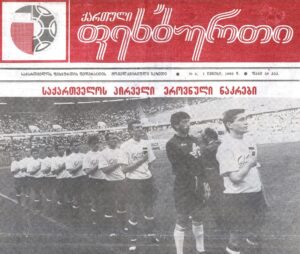
On May 27, 1990, the Georgian National Team played its first match—a friendly against fellow Soviet republic, Lithuania. As it was still a Soviet Republic, neither FIFA nor UEFA recognized the Georgian National Team yet, preventing it from playing competitively in those organizations. Although Georgia declared independence in 1991 and became a FIFA and UEFA member in 1992, it wasn’t until 1994 that the team played competitively because the 1994 World Cup qualification process had already begun when Georgia was granted membership. In that year, Georgia lost in a UEFA Euro qualifier against Moldova. Since the 1990s, the team has played well but failed to qualify for international play, especially champions such as the World Cup. The farthest the team has ever progressed was for UEFA Euro 2020, where the team lost the final qualifying game to North Macedonia.
The Georgian National Team has played in the same stadium since its beginning, the Boris Paitchadze Dinamo Arena, named after one of the most famous Georgian Soviet-era soccer players. The team shares the stadium with Dinamo Tbilisi, the most successful team in the Georgian soccer league, and the national rugby team. Built in 1976 and renovated in 2006, the Boris Paitchadze Dinamo Arena remains the largest stadium in Georgia at a capacity of 54,139. Before 2006, the capacity was higher, but the renovation eliminated standing room and made the stadium an all-seater stadium. Before the renovation, there was also a swimming pool in the stadium; however, it has since become the nightclub Bassiani, the largest of its kind in Georgia.
A star player for the national team is Khvicha Kvaratskhelia, who is additionally a rising star for Napoli in Italy. After the Russian invasion of Ukraine, FIFA allowed players to cancel their contracts in Russia and transfer to another team. Kvaratskhelia is arguably the most famous of these transfers. He left Rubin Kazan, where he played well but remained relatively unknown in Europe. Since his transfer, his incredible scoring abilities (10 goals and ten assists) during the 2022-23 season not only won him the Serie A Player of the Year award (the first Georgian ever to do so) but also helped Napoli win the Serie A title for the first time in 33 years. He has even been given the nickname “Kvaradona” due to how the quick fandom surrounding him resembles that acquired by legendary Napoli player Diego Maradona. Although joining the Georgian National Team in 2019, much like his club career, Kvaratskhelia did not begin to be a prominent member until 2022. To date, his biggest accomplishment is being the third-highest goal scorer in the UEFA Nations League for 2023.
The team’s most recent head coach is Willy Sagnol, whose tenure has been relatively successful. A French citizen who had not coached since 2017 and who had never coached a National Team when he signed on in 2021, Sagnol says that his prior relationship with the Georgian Football Federation (GFF) President Levan Kobiashvili in the Bundesliga, the professional association football league in Germany, was the reason for taking the role. Their mutual admiration for one another while playing for different teams (Sagnol for Bayern Munich and Kobiashvili for SC Freiburg) led to his recruitment for the team. His tenure was primarily spent on qualifying for the 2022 World Cup and the Nations League and is currently trying to qualify for Euro 2024. While the Georgian National Team did not make it into either of the previous tournaments, the progress which Georgia has made in the qualifying rounds is much further than in the previous years.
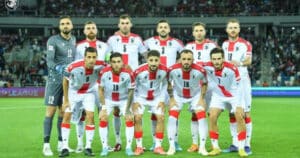
The Georgian National Team has partnered with UEFA since 2022 to implement a four-year strategic plan to build community involvement and a sustained soccer culture in Georgia. This includes programs to increase women’s participation in the sport for the accompanying women’s counterpart to the Georgian National Team as well as having more female fans of the male team. The GFF believes that without a sense of national pride, it won’t be possible to build the fanbase need to create the financial support needed for a successful national team, so female participation in the sport is crucial. Another initiative started in 2022 is a grassroots campaign to renovate rural pitches and to include more of Georgia’s many ethnic minorities in its youth leagues. This again helps build a broad sense of national pride through soccer and additionally helps youth players outside the capital of Tbilisi to play and potentially enter club teams, giving the National Team more options in the future for its player base.
FC Dinamo Batumi
By Jacqueline Row
Since 1923, FC Dinamo Batumi has represented its home city of Batumi, Georgia in local and league play first throughout the USSR and now across Europe. The team formed from the merger of local teams Mezgvauri (The Sailor) and Tsiteli Raindi (The Red Knight). Representing Batumi, the club took the city’s name as its own. The other half of the team’s name “Dinamo” is one of the most common names for a soccer club in the former USSR. Derived from Greek: dynamis, -power, and Latin: motio, -motion, the name means “Power in Motion” and was also also the name of the Soviet Dynamo society, which in turn was a part of the USSR’s universal system of physical education and sports, linking all such sports clubs to the state apparatus under the sport and fitness society.
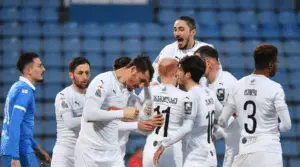
For most of the club’s history during the Soviet era, it participated in the Soviet Second League, which was the third highest division of Soviet football in the Republics Zone. The zone included all football clubs of the USSR outside of Russia and Ukraine. Highlights in Dinamo Batumi’s Soviet career in that zone include a second-place league rank behind FC Lokomotivi Tbilisi in 1963 and a first-place ranking in 1983. Within Georgia, the team won the Georgian Cup tournament in 1947 and 1958 and the Erovnuli Liga Regional Tournament Championship in 1938 and 1940.
Dinamo Batumi was promoted to the Soviet First League in the last six seasons of the 1980s, but the Soviet Union football league system was disbanded with the dissolution of the Soviet Union in 1991.
In 1990, just before the dissolution of the USSR, the Erovnuli Liga Tournament became the Georgian National Football League. This league remains the main professional league in Georgia. FC Dinamo Batumi joined immediately upon the league’s founding. To further cut ties with the club’s Soviet origins, the team initially changed its name to simply FC Batumi, though this decision was reversed in 1994. The club won both the Georgian Cup and Georgian Super Cup in 1998 and represented Georgia in European competitions for four straight seasons.
However, following the streak of success, the club’s performance for the next decade experienced a steep decline. The team was even demoted to the Georgia’s second division professional league Priveli Liga after the 2007-2008 season.
Since 2014, the team has gradually regained their former dominance in Georgian football. Dinamo Batumi were runners-up in the Erovnuli Liga in 2014. And since the appointment of head coach Giorgi Geguchadze, this placement was maintained in 2019 and 2020 before winning the league in 2021 and winning the Georgian Super Cup in 2022. Currently, the club is owned by Georgian agriculture magnate Roman Pipia and its sporting director is former Dinamo Batumi player Vladimer Dvalishvili.
FC Locomotive Tbilisi
By Marge Stafford
FC Locomotive Tbilisi was founded in 1936 in the Georgian capital of Tbilisi. It was then part of the Lokomotiv Voluntary Sports Society (VSS), which promoted sports and trained athletes. The VSS and Lokomotiv itself were, like most VSS organizations, run by a trade union. As the name “Lokomotiv” suggests, the club was owned and governed by the state-owned railway industry of Georgia. This was usually the case for Eastern Bloc teams sharing the “Lokomotiv” club name. The players were generally known as “Lokomotivi,” or “Railroaders.”
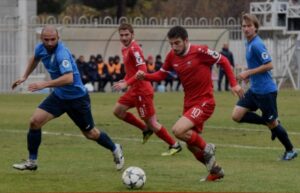
The club immediately saw great success. In 1937, the club won the Georgian championship. With this victory, the team was moved to the USSR Top League tournament, the highest level of Soviet football. However, after placing 24th out of 26 teams in 1938, the team was relegated to the Soviet First League, the second-highest ranked in Soviet football.
While the team managed to regain their spot at the tournament again in 1940, they were disqualified from the tournament after 20 rounds “for low technical results” according to official Soviet records. The team was withdrawn from the tournament, the results of all matches with their participation were canceled. Following this season, the club never managed to participate at the top level of Soviet football throughout the remainder of the USSR’s history.
Within Georgia, the team managed to win the Georgia Cup Tournament again in 1945 and 1956. However, the 1956 Georgian Cup victory would be their final championship victory for up until the dissolution of the USSR. Lokomotiv Tbilisi’s league placements fluctuated between the Soviet football’s second and third divisions without any championship victories within Georgian or USSR tournaments.
Although they often did well inside Georgia, the USSR began to allow only one club per republic to participate in the top league. Since Dinamo Tbilisi had been in the top league consistently throughout this era, it seems this policy may have been what kept Lokomotiv Tbilisi out of the top league.
Following the dissolution of the USSR, the club was acquired by government-funded Georgian Railways. Since 2004, the club has been privately held by investor Alex Topuria, who purchased 75% of the club’s shares from the Georgian Railways. The remaining 25% of the club was purchased by Irakli Machavariana, a retired Georgian rugby union player turned coach and businessman. The team has competed nationally in Georgia’s first and second professional divisions, the Erovnuli Liga and the Erovnuli Liga 2 respectively.
Also following the collapse of the USSR, the spelling of “Lokomotiv” was changed to “Locomotive” in the club name. While the name still alludes to the team’s Soviet origins, the spelling adopts the English transliteration, rather than the Russian, of the original Latin-based word. The spelling change helped to move the team from Russian influence to a solidly European-focused organization, a move that much of Georgian society and the Georgian government made at the same time.
The team placed second within Erovnuli Liga 2 in 1996-1997 and won the league in 1999-2000, allowing the club to be promoted to the first league. Though never winning the first league, the club placed 3rd in 1998-99 and second in 2000-01 and 2001-02, thus being one of Georgia’s strongest teams during this era. This was further proven by their Georgian Cup victories in 1999-00, 2001-02, and 2004-05. Though the team hasn’t reached this level of dominance in Georgian football since, they have managed to place second in the second league later on in 2012-13 and 2014-15 and are again performing well in the 2020s. The club CEO is currently the former FC Locomotive Tbilisi player Georgia Kipiani.
FC Saburtalo Tbilisi
By Marge Stafford
FC Saburtalo Tbilisi is one of several teams from Tbilisi in the Erovnuli Liga, the highest division in the Georgian League. The team was founded in 1999 and is named after the central Tbilisi district it resides in. Saburtalo spent most of its early years in the lower divisions, but since qualifying for the 2015-16 season, the team has remained in the Erovnuli Liga. Steadily increasing their table rank, the Red Eagles (the team’s unofficial nickname), have won the Georgian Cup twice, in 2019 and 2021, and the Georgian Super Cup once, in 2020. In the ongoing 2023 season, Saburtalo currently stands in second place overall in the league.
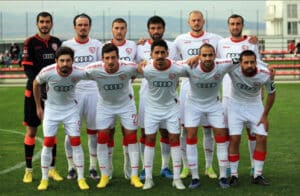
One explanation for the team’s recent success can be attributed to its robust academy system. Saburtalo is well known for its strong youth teams, which give the senior club new players every season. This emphasis on youth programs has been a team strategy for almost two decades; the youth team was created in 2004 and further developed after the team’s acquisition in 2005 by Tariel Khechikashvili. Khechikashvili later became Georgia’s Minister of Sports & Youth Affairs between 2015 and 2017 and the President of the International Foundation of Sport, Tourism, and Youth in part based on his resume that now includes the success of the soccer academy of Saburtalo.
The team currently has two main stadiums. Bendela is the smaller, but also the most famous since this is where the academy is and the senior team’s main training facility. Opened in 2011 with a capacity of only around 2000, Bendela was planned for a future where Saburtalo would remain in the lower divisions. When Saburtalo entered Erovnuli Liga 2 and then Liga, the team began to play in Mikheil Meskhi Stadium, a multi-purpose stadium that Saburtalo shares with several other teams. Opened in 1952, the stadium is more famously known for being the home arena for FC Locomotive Tbilisi. The previous name for the stadium was Locomotive Stadium due to the team’s long history playing there. After its renovation in 2001, the arena now has a capacity of about 27,000, making it the second-largest in Georgia. Due to this large capacity, the stadium is an occasional venue for the Georgia National Team and major concerts as well.
Saburtalo gets most of its financial funding from the Georgian Football Federation; however, some notable sponsors exist. The team’s longstanding relationship with Audi is the most famous and arguably most important. With Audi’s support, Saburtalo has been able to bolster its youth team even more, including participating in the first-ever Audi Cup, which saw Saburtalo playing against teams from Italy, Spain, and Azerbaijan. Saburtalo also signed a sponsorship deal in 2021 with the Italian company Errea for the team’s official uniforms and sporting equipment.
With great talent in the field and in the pipeline as well as a solid development strategy and long-time sponsors, Saburtalo is definitely a team to watch in Georgia’s developing soccer culture.
FC Dila Gori
By Marge Stafford
FC Dila Gori is a team in Georgia’s national Erovnuli Liga with roots that reach back to Soviet times. Founded in 1949, the name comes from a poem by Joseph Stalin called “Dila,” which means “morning” in Georgian. “Gori,” meanwhile, is the regional capital where the team is based – and is also the birthplace of Stalin. During the Soviet Union, Dila primarily played within Georgia or neighboring Southern Caucus countries but did have seasons in the Soviet Second and Third Leagues. When the Georgian Football Federation was founded in 1990, the teams from the top three leagues of Soviet Georgia were included – Dila was one of them. While the team remained in the Erovnuli League during the 1990s, the team fell to the third tier during the 2000s. Dila’s luck changed after 2010, when the team was promoted twice in two years, putting them back in the Erovnuli League, where they remain to this day. Since 2020, the team has finished third every season and is currently fifth for the current 2023 season.

Dila is an interesting case in that the municipality owned the team rather than a single owner or business group until 2016. This meant that the ability to acquire new or retain old players and improve infrastructure was also tied to municipal funds. However, the amount of debt the team had was too much for the municipality to maintain, and by the 2010s, the group’s fate was falling under question.
However, Dila was auctioned off to an Israeli business group, and, as part of the deal, the company must now pay off Dila’s debts and invest in the adult and youth teams. The team has since been hungry for cash, and one sponsorship that Dila has found has been controversial. Georgian online casinos are derided by many as being unsavory – but they are often profitable and spend heavily on marketing. Dila has recently taken a sponsorship with the online betting company Marsbet.
Although the team itself was sold, the stadium Dila plays in is still government owned. Tengiz Burjanadze Stadium is designated as multi-use but is predominantly used for Dila. When it was constructed in 1949, the stadium had a capacity of 8,300, but a recent renovation project, while improving overall conditions at the stadium, also reduced its seating to just 5,000. The stadium is named after one of Dila’s star Soviet-era players.
As the team moves into the future, its with Stalin remain controversial and will have to be considered, especially if it wishes to have greater European exposure. Gori is Stalin’s hometown and he is still widely regarded as a local hero there. When Dila joined the UEFA Champions League, the team’s description began with the ties to Stalin. However, there are those that argue that leaning into the connection with Stalin draws attention away from the team itself.
Watching the Georgian Women’s National Soccer Team in Tbilisi (2024)
By Sydney Moore, University of Richmond
While on my summer study abroad program in Tbilisi, I discovered, through a Google search, that The Georgian Women’s National Soccer Team was set to play a match against Cyprus in Tbilisi on June 4, 2024. Details other than the date and time were sparse. Tickets to the match could not be found online, but a post from the team’s Instagram page, @Nakrebi, shared with the Men’s National Team, confirmed that attendance was free. We did not know what level of support would be shown to a women’s team in Georgia, but we were to be pleasantly surprised by the game we attended.
My friends and I opted to take a Bolt ride from the Fabrika hostel where we were staying. The 20-minute ride to the stadium and back cost the four of us a total of 20 GEL (about $7.00).
The women’s team plays at Mikheil Meskhi Stadium II, located behind the larger men’s stadium (known, obviously, as Mikheil Meskhi Stadium I). Both are named after the great Georgian soccer player Meskhi (1937-1991), who played left flank for the Soviet team in the 1962 World Cup.
Since the women’s stadium only holds 2,500 people (as opposed to the main stadium, which can hold more than 27,000), we arrived two hours before the 20:00 kickoff to secure seats, in case it was crowded. Instead, when we got there, the stadium was practically deserted. A female volunteer informed us that the women’s match would not fill up and we had arrived too early. She seemed amused at our mishap, but was exceptionally welcoming. We walked past her up a flight of stairs to the stadium and chose exactly the seats we wanted, alongside a few other early fans.
We watched the two teams perform a surprisingly lackadaisical warm-up. Oddly, we also noticed that the players who had juggled the ball around at warm-up were not the same players who walked out as starters.
We grabbed snacks from the small concession stand, a makeshift affair they apparently pull out for games. I purchased a hotdog, popcorn, and water for 14 GEL ($5.00). The hotdog was freshly grilled and tasty. Also on offer were chips and beer, but it did not appear that they sold Georgian food. Besides the small concessions, the only other stand was a merchant who had set up a table to sell noisemakers and Georgian flags near the stadium entrance.
About 30 minutes before kickoff, the crowd started to swell. By game time, the stadium was an encouraging 75% full. Halfway into the first half, there were single seats open between some groups of fans, but there were no larger groupings of seats open anywhere.
The atmosphere was vibrant. The evening started to feel calming, yet also exhilarating. Although most fans stayed seated throughout the game, it was clear they were locked in on watching the match.
A dedicated cheering section brought a large drum. Some wrapped themselves in Georgian flags while others waved their country’s colors proudly. They positioned themselves at the far end of the stadium on the side of the Georgian benches and stayed standing the entire match. These dedicated fans lead chants of “Sakartvelo!” Every time they started, the rest of the stadium would join in.
The match lasted 90 minutes with a 15-minute halftime. So, from the posted kickoff time of 20:00, we were out of the stadium by 22:00.
Although we stood out as the rare non-Georgians in this crowd, everyone around us treated us like any other fans there to watch soccer. Our group joined in on the “Sakartvelo” chants, and my friend and I even waived small Georgian flags. Soccer genuinely is a game for everyone. The thrill of being a foreigner surrounded by a local crowd heightened the experience because we got to take in what felt like a truly local experience, cheering for the Women’s home team.
You’ll Also Love
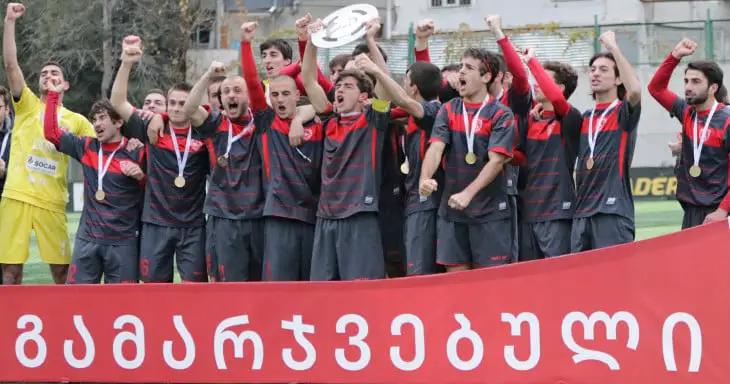
Georgian Soccer: An Introductory Guide
The history of soccer in Georgia goes back to the late 1800s, when it was brought to country by English sailors shortly after the sport was invented. Although Georgia was an early adopter of the sport, its development has been arguably held back by colonialism. Georgia was largely a backwater for Soviet soccer and the […]
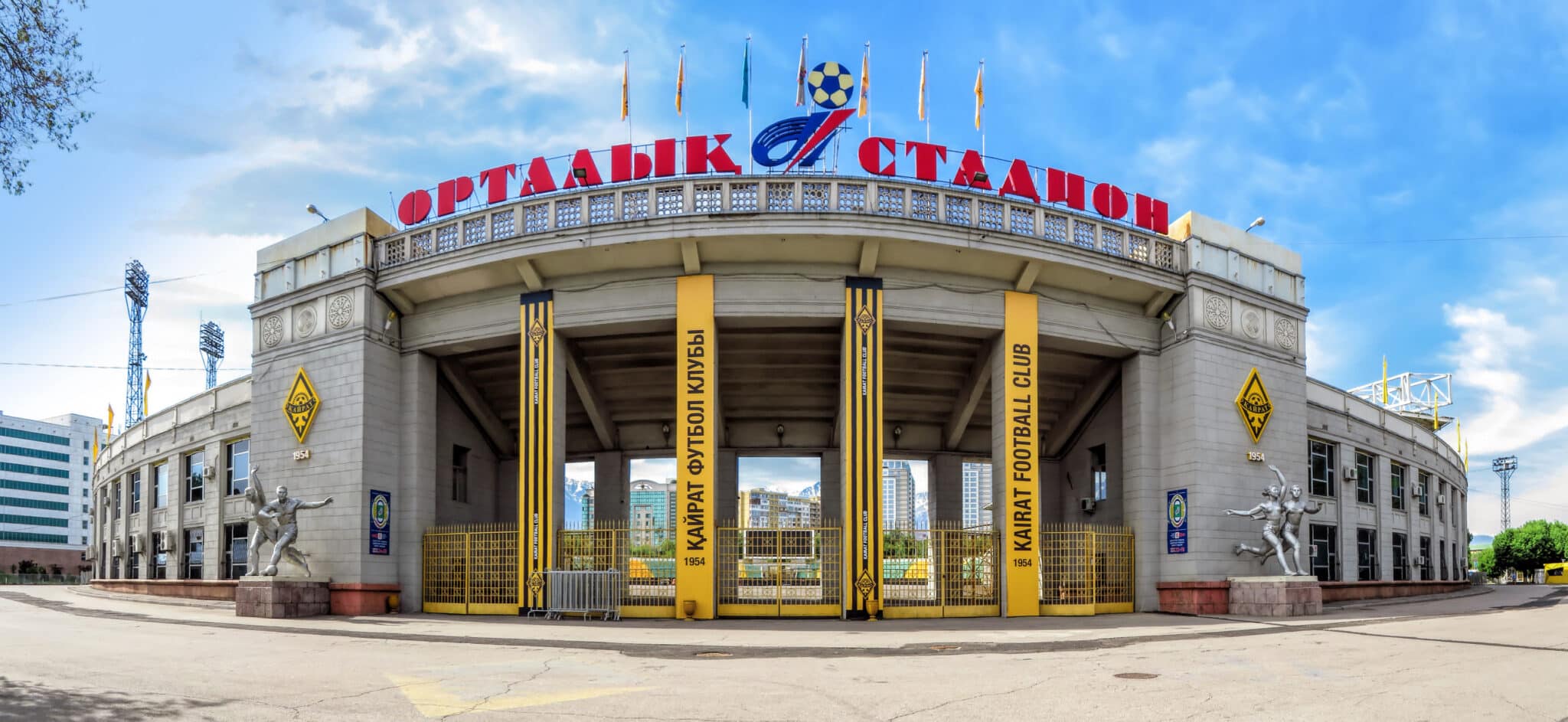
Watching FC Kairat Almaty at Almaty Central Stadium
For traveling soccer fans, attending a live game is a wonderful way to experience a unique part of local culture. Despite being a truly global sport, soccer has a unique culture everywhere it is played. Whether it be the chants or the food at the concessions, there is always something to learn about the local […]
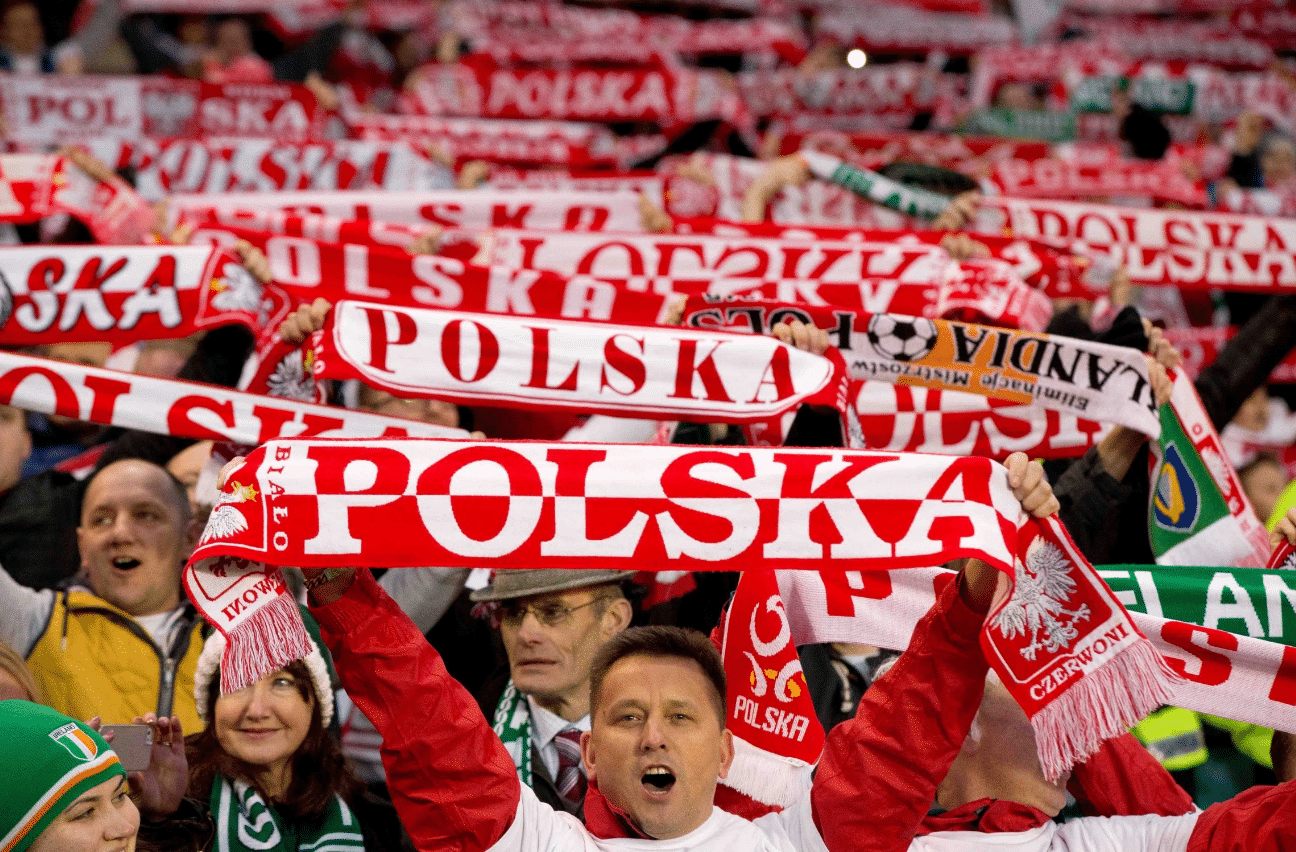
Polish Soccer: An Introductory Guide
The history of soccer in Poland begins when the county didn’t technically exist – having been partitioned by larger powers. Like the rest of the country, Polish soccer eventually united after Poland was reassembled after WWI. Soccer was again set back in WWII when the Nazis banned the Poles from organizing games, fearing that fed […]

Kyrgyz Soccer: An Introductory Guide
The history of soccer in Kyrgyzstan goes back to 1921, with an oft-cited first match taking place in Bishek, Kyrgyzstan’s capital city, against a team from Kazakhstan. The Kazakh team won, but not before the sport of soccer staked a permanent claim on the Kyrgyz national consciousness— the game’s been culturally significant ever since. However, […]
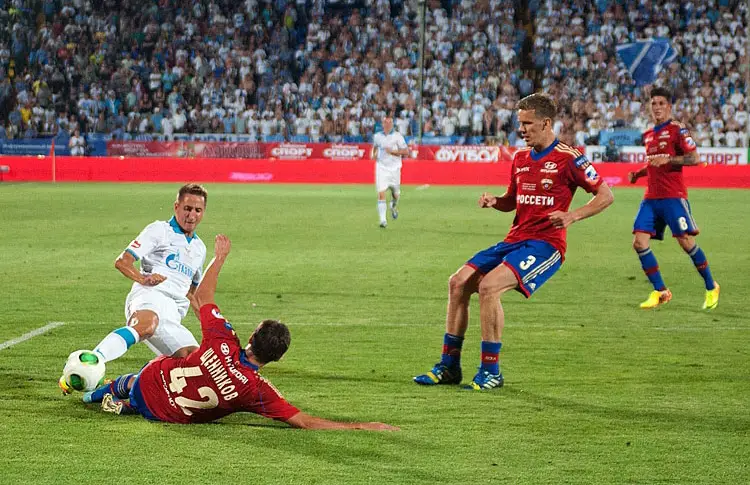
Russian Soccer: An Introductory Guide
Russian soccer caught the world’s attention in 2018, when Russia hosted a very successful FIFA World Cup. The game is Russia’s most popular national sport, ranking just above hockey, and Russia poured millions into new stadiums and renovations on older, Soviet-built stadiums. This construction was made as a point of pride for the Russian government, […]


